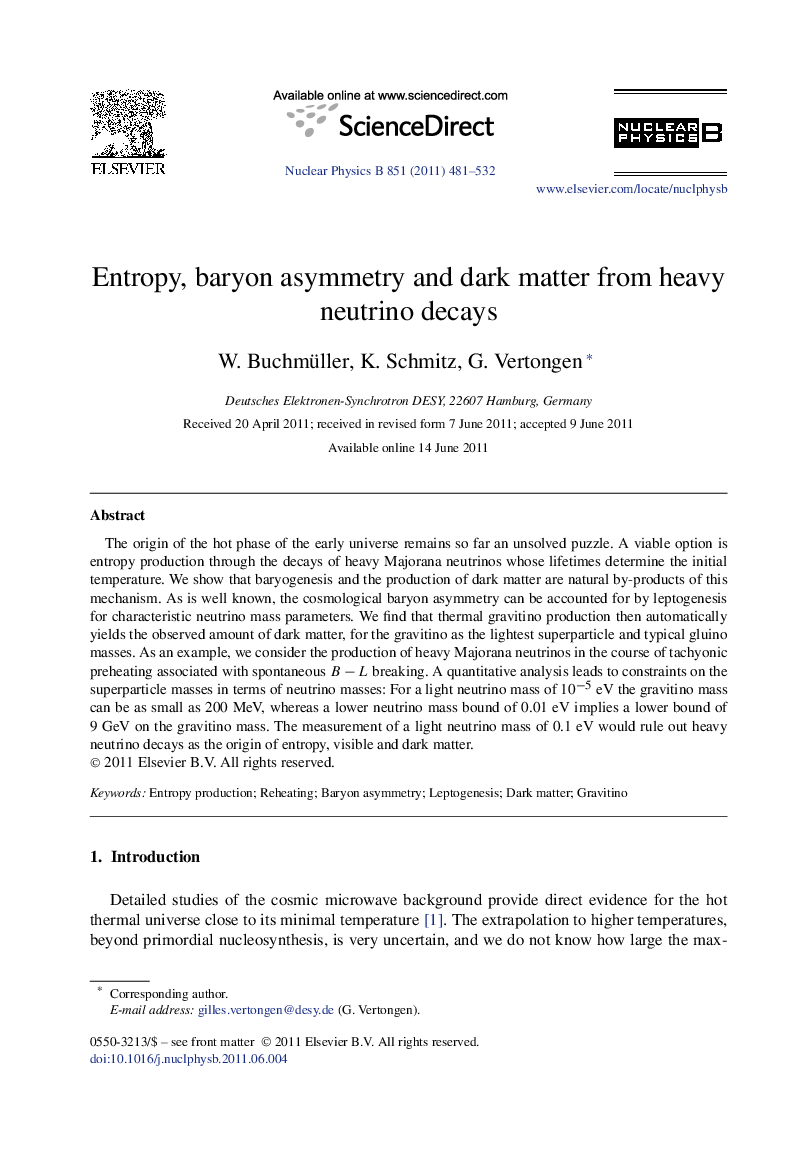| Article ID | Journal | Published Year | Pages | File Type |
|---|---|---|---|---|
| 1842946 | Nuclear Physics B | 2011 | 52 Pages |
Abstract
The origin of the hot phase of the early universe remains so far an unsolved puzzle. A viable option is entropy production through the decays of heavy Majorana neutrinos whose lifetimes determine the initial temperature. We show that baryogenesis and the production of dark matter are natural by-products of this mechanism. As is well known, the cosmological baryon asymmetry can be accounted for by leptogenesis for characteristic neutrino mass parameters. We find that thermal gravitino production then automatically yields the observed amount of dark matter, for the gravitino as the lightest superparticle and typical gluino masses. As an example, we consider the production of heavy Majorana neutrinos in the course of tachyonic preheating associated with spontaneous BâL breaking. A quantitative analysis leads to constraints on the superparticle masses in terms of neutrino masses: For a light neutrino mass of 10â5eV the gravitino mass can be as small as 200 MeV, whereas a lower neutrino mass bound of 0.01 eV implies a lower bound of 9 GeV on the gravitino mass. The measurement of a light neutrino mass of 0.1 eV would rule out heavy neutrino decays as the origin of entropy, visible and dark matter.
Related Topics
Physical Sciences and Engineering
Mathematics
Mathematical Physics
Authors
W. Buchmüller, K. Schmitz, G. Vertongen,
